While most gardeners think of planting new garden plants in spring when the weather fall. Autumn planting of natives has many benefits: for the gardener, for the plants and for the soil. Our native plant nursery at Southern Oregon Research and Extension Center has many beautiful native grasses, perennials, shrubs and trees for you to plant in late October for establishment over the winter months.
We have plants for sale every weekday from 9 am to 4 pm. The nursery is self-serve. Choose the plants you want, pull the price tags, and take them into the office and pay. Check or cash is preferred, but if the plant clinic is open, they can run a card. Yes, this is shameless self-promotion, but we want EVERYONE to plant native plants this fall!
Plants that go into the ground in mid to late fall have an advantage over those planted in spring. Because native plants use the first several months in the ground growing their root systems, they can take advantage of the soil warmth, even after air temperatures drop to the point that top growth becomes dormant. It may look like nothing is happening, but those roots are growing and moving down in the soil, making associations with the mycelial organisms that will help them grow faster in the spring, and help them to infiltrate the rain that falls on your property. When planted in the spring, native plants will often appear to not be growing at all, as they race to get their roots established. By taking advantage of fall planting and cool season root growth, you can see faster growth in spring of the above-ground vegetation.
Of course, not waiting to plant until spring means not having to water through the dry, hot season while the plant establishes itself. Native plants require less water and pruning maintenance in comparison to non-natives, but like any young plant, if planted in spring they will require more watering to ensure survival. Fall planting just makes sense to keep both the plant and the gardener from stressing!
Benefits to the soil abound as well. As long as the plant can photosynthesize — that is build carbon body parts — using sunlight and carbon dioxide, that carbon is being pumped out of the air and into the root systems as long as there is green vegetation above ground. Carbon expelled from root tissue can stay in the soil for hundreds to thousands of years. Think of our native prairie soils, made rich and black by millennia of native bunchgrass roots. The exact same thing happens in your garden when you plant our deep-rooted native plants. Soil organisms that evolved with western native plants abound where natives grow and add to the richness of the soil ecosystem.
Plant some native plants in your yard this fall and you will see the ecosystem benefits: healthier soil, more abundant and diverse wildlife, more pollinators and butterflies, more breeding birds, better water retention and less need to irrigate. This fall, GARDEN FOR LIFE!


 Despite being named Oregon State Gardener of the Year last year in 2023, my front yard is a constant embarrassment to me. It is NOT like the other, “well-tended” yards in my neighborhood. It is weedy and rangy and has dead stems and flower stalks all over it. Dry leaves are piled up under all the shrubs and trees. I even have what we refer to as a ‘dragon nest’- a structure I made
Despite being named Oregon State Gardener of the Year last year in 2023, my front yard is a constant embarrassment to me. It is NOT like the other, “well-tended” yards in my neighborhood. It is weedy and rangy and has dead stems and flower stalks all over it. Dry leaves are piled up under all the shrubs and trees. I even have what we refer to as a ‘dragon nest’- a structure I made  I have 39 species of birds that visit my pitifully small corner lot in Medford. There they find winter seed heads to feed from, leaves to dig through to find isopods, overwintering fly, moth and butterfly larvae, earthworms, centipedes, millipedes, and other winter food. I do not see this activity in or on any of the other yards in my neighborhood. The flower stems and stalks of the perennials, though blackened and bent from winter storms, are home to stem nesting native bees, which can also provide larvae to birds who drill into the stems for food
I have 39 species of birds that visit my pitifully small corner lot in Medford. There they find winter seed heads to feed from, leaves to dig through to find isopods, overwintering fly, moth and butterfly larvae, earthworms, centipedes, millipedes, and other winter food. I do not see this activity in or on any of the other yards in my neighborhood. The flower stems and stalks of the perennials, though blackened and bent from winter storms, are home to stem nesting native bees, which can also provide larvae to birds who drill into the stems for food While most gardeners think of planting new garden plants in spring when the weather warms, the very best time to plant those native plants you’ve been meaning to put in is fall. Autumn planting of natives has many benefits for the gardener, the plants and the soil. Our native plant nursery at Southern Oregon Research and Extension Center has many beautiful native grasses, perennials, shrubs and trees for you to plant in late October for establishment over the winter months. And as an added bonus, we will be selling them on Saturday, October 14th from 9 am to 2 pm. Yes, this is shameless self-promotion, but we want EVERYONE to plant a native this fall!
While most gardeners think of planting new garden plants in spring when the weather warms, the very best time to plant those native plants you’ve been meaning to put in is fall. Autumn planting of natives has many benefits for the gardener, the plants and the soil. Our native plant nursery at Southern Oregon Research and Extension Center has many beautiful native grasses, perennials, shrubs and trees for you to plant in late October for establishment over the winter months. And as an added bonus, we will be selling them on Saturday, October 14th from 9 am to 2 pm. Yes, this is shameless self-promotion, but we want EVERYONE to plant a native this fall!
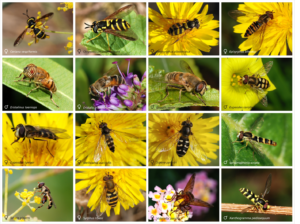

 In September of 2021, the irrigation wells on the OSU Southern Oregon Research and Education Center campus in Central Point ran dry. Watering of all campus demonstration gardens stopped, and plants in the native plant nursery began to die. Through a massive emergency effort, the nursery stock was either donated to local restoration projects or taken to member homes to be maintained until we could install a watering system.
In September of 2021, the irrigation wells on the OSU Southern Oregon Research and Education Center campus in Central Point ran dry. Watering of all campus demonstration gardens stopped, and plants in the native plant nursery began to die. Through a massive emergency effort, the nursery stock was either donated to local restoration projects or taken to member homes to be maintained until we could install a watering system.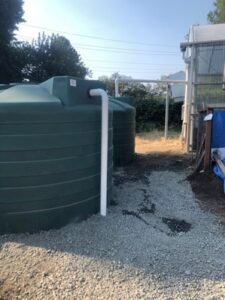 approval to install the rain catchment system as an emergency irrigation backup for our well. Fundraising began for the $15,000 system with a Go Fund Me campaign in February of 2022. A total of $10,367 was raised, with the remaining funds being acquired through plant sales from the native plant nursery, and a generous grant from
approval to install the rain catchment system as an emergency irrigation backup for our well. Fundraising began for the $15,000 system with a Go Fund Me campaign in February of 2022. A total of $10,367 was raised, with the remaining funds being acquired through plant sales from the native plant nursery, and a generous grant from  rainwater to maintain the native plants in the nursery on campus in the event of another well failure. Additionally, the system will serve as a demonstration teaching tool for Master Gardeners, Small Farms, Land Stewards, 4-H programs, and any community association that would like to bring members onto campus to see what a large capacity capture system looks like. An interpretive sign was installed in early July of 2023, and we look forward to the public being able to learn about rainwater catchment on the SOREC campus.
rainwater to maintain the native plants in the nursery on campus in the event of another well failure. Additionally, the system will serve as a demonstration teaching tool for Master Gardeners, Small Farms, Land Stewards, 4-H programs, and any community association that would like to bring members onto campus to see what a large capacity capture system looks like. An interpretive sign was installed in early July of 2023, and we look forward to the public being able to learn about rainwater catchment on the SOREC campus.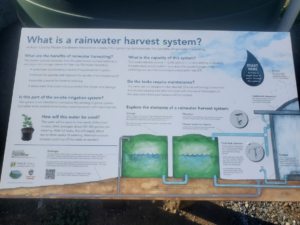
 Back in April you read Part 1 of this series about beneficial insects you can encourage in your yards. I discussed predatory insects: lacewings, mantids, ladybird beetles, pirate bugs and syrphid flies. All of these are active hunters of garden pests. Now we need to shift our focus to the parasitoids – those insects who parasitize other insects. In this instance, females of the parasite find a suitable host insect – usually a caterpillar – and lay their eggs directly in the body of the host. The host remains alive while being eaten from the inside by the larvae of the parasite. Not a pleasant vision, but one uniquely designed by nature to maintain ecosystem balance. Examples of parasitoids are parasitic tachinid flies, braconid, chalcid, Ichneumonid and trichogramma wasps.
Back in April you read Part 1 of this series about beneficial insects you can encourage in your yards. I discussed predatory insects: lacewings, mantids, ladybird beetles, pirate bugs and syrphid flies. All of these are active hunters of garden pests. Now we need to shift our focus to the parasitoids – those insects who parasitize other insects. In this instance, females of the parasite find a suitable host insect – usually a caterpillar – and lay their eggs directly in the body of the host. The host remains alive while being eaten from the inside by the larvae of the parasite. Not a pleasant vision, but one uniquely designed by nature to maintain ecosystem balance. Examples of parasitoids are parasitic tachinid flies, braconid, chalcid, Ichneumonid and trichogramma wasps. Tachinid flies are quite variable in appearance but are usually very bristly. Adult flies feed on nectar and are important pollinators in your garden.
Tachinid flies are quite variable in appearance but are usually very bristly. Adult flies feed on nectar and are important pollinators in your garden. Female flies lay one to several eggs in a host caterpillar or similar larva. Those eggs then hatch and the fly larvae feed on the living host until they are ready to pupate, at which point they emerge, finally killing the host insect.
Female flies lay one to several eggs in a host caterpillar or similar larva. Those eggs then hatch and the fly larvae feed on the living host until they are ready to pupate, at which point they emerge, finally killing the host insect.


 wasps – like a speck of dust. Females lay up to 300 eggs, usually in the eggs of the host insect. But some also lay eggs directly into the bodies of adult scale, aphids, beetles, psyllids and caterpillars such as cutworms, hornworms, corn earworms, and leafrollers. Trichogramma wasps can be purchased in nurseries and organic growing supply stores.
wasps – like a speck of dust. Females lay up to 300 eggs, usually in the eggs of the host insect. But some also lay eggs directly into the bodies of adult scale, aphids, beetles, psyllids and caterpillars such as cutworms, hornworms, corn earworms, and leafrollers. Trichogramma wasps can be purchased in nurseries and organic growing supply stores.

 Chalcid wasps parasitize caterpillars of several different species, while
Chalcid wasps parasitize caterpillars of several different species, while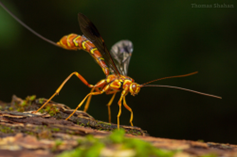 Ichneumonid wasps specialize primarily in tree pest insects. Chalcid, Braconid and Icneumonid wasps are much larger than Trichogramma and parasitize caterpillars directly.
Ichneumonid wasps specialize primarily in tree pest insects. Chalcid, Braconid and Icneumonid wasps are much larger than Trichogramma and parasitize caterpillars directly.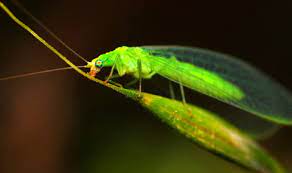 Lacewings & Snakeflies
Lacewings & Snakeflies Our second most important pollinators are the flies. Larvae eat garden pest species, while the adults are nectar feeders on small, shallow flowers in the Brassicaceae, Apiaceae, and Asteraceae families.
Our second most important pollinators are the flies. Larvae eat garden pest species, while the adults are nectar feeders on small, shallow flowers in the Brassicaceae, Apiaceae, and Asteraceae families. True bugs – Minute Pirate bug, Big-Eyed Bug and Damsel Bug
True bugs – Minute Pirate bug, Big-Eyed Bug and Damsel Bug Beetles: Ladybug, Rove Beetle, Soldier Beetle, and Ground Beetle.
Beetles: Ladybug, Rove Beetle, Soldier Beetle, and Ground Beetle. Oregon State University Extension
Oregon State University Extension
